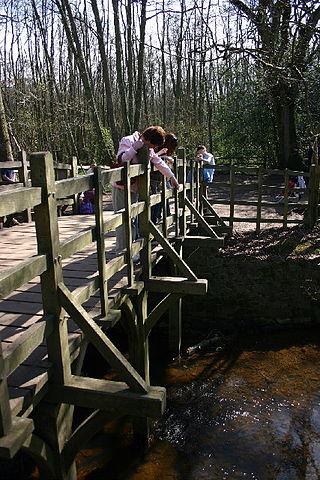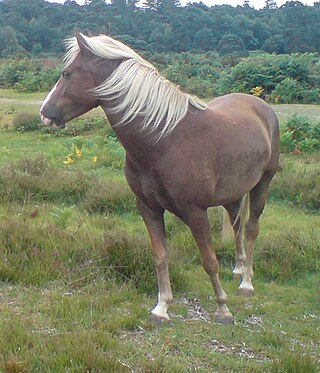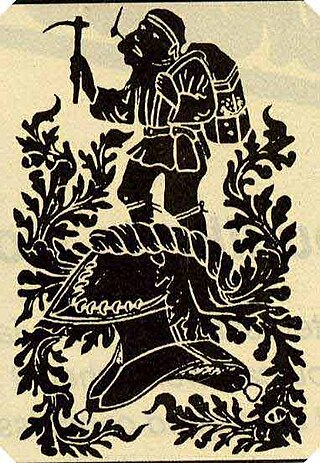
Environmental laws are laws that protect the environment. Environmental law is the collection of laws, regulations, agreements and common law that governs how humans interact with their environment. This includes environmental regulations; laws governing management of natural resources, such as forests, minerals, or fisheries; and related topics such as environmental impact assessments. Environmental law is seen as the body of laws concerned with the protection of living things from the harm that human activity may immediately or eventually cause to them or their species, either directly or to the media and the habits on which they depend.

Ashdown Forest is an ancient area of open heathland occupying the highest sandy ridge-top of the High Weald Area of Outstanding Natural Beauty. It is situated some 30 miles (48 km) south of London in the county of East Sussex, England. Rising to an elevation of 732 feet (223 m) above sea level, its heights provide expansive vistas across the heavily wooded hills of the Weald to the chalk escarpments of the North Downs and South Downs on the horizon.

The Forest of Dean is a geographical, historical and cultural region in the western part of the county of Gloucestershire, England. It forms a roughly triangular plateau bounded by the River Wye to the west and northwest, Herefordshire to the north, the River Severn to the south, and the City of Gloucester to the east.

The New Forest is one of the largest remaining tracts of unenclosed pasture land, heathland and forest in Southern England, covering southwest Hampshire and southeast Wiltshire. It was proclaimed a royal forest by William the Conqueror, featuring in the Domesday Book.

Common land is land owned by a person or collectively by a number of persons, over which other persons have certain common rights, such as to allow their livestock to graze upon it, to collect wood, or to cut turf for fuel.

The New Forest pony is one of the recognised mountain and moorland or native pony breeds of the British Isles. Height varies from around 12 to 14.2 hands ; ponies of all heights should be strong, workmanlike, and of a good riding type. They are valued for hardiness, strength, and sure-footedness.

A royal forest, occasionally known as a kingswood, is an area of land with different definitions in England, Wales, Scotland and Ireland. The term forest in the ordinary modern understanding refers to an area of wooded land; however, the original medieval sense was closer to the modern idea of a "preserve" – i.e. land legally set aside for specific purposes such as royal hunting – with less emphasis on its composition. There are also differing and contextual interpretations in Continental Europe derived from the Carolingian and Merovingian legal systems.

Lyndhurst is a large village and civil parish situated in the New Forest National Park in Hampshire, England, about nine miles (14 km) south-west of Southampton. Known as the "Capital of the New Forest", Lyndhurst houses the New Forest District Council and Court of Verderers. It is also a popular tourist attraction, with many independent shops, art galleries, cafés, museums, pubs and hotels. As of 2001 Lyndhurst had a population of 2,973, increasing to 3,029 at the 2011 Census.
Verderers are forestry officials in England who deal with common land in certain former royal hunting areas which are the property of the Crown. The office was developed in the Middle Ages to administer forest law on behalf of the King. Verderers investigated and recorded minor offences such as the taking of venison and the illegal cutting of woodland, and dealt with the day-to-day forest administration. In the modern era, verderers are still to be found in the New Forest, the Forest of Dean, and Epping Forest, where they serve to protect commoning practices, and conserve the traditional landscape and wildlife.
In United States law, the term color of law denotes the "mere semblance of legal right," the "pretense or appearance of" right; hence, an action done under color of law adjusts (colors) the law to the circumstance, yet said apparently legal action contravenes the law.
The Epping Forest Keepers are an ancient and historic body of people who are employed by the City of London, who in return are responsible, on behalf of the Conservators, for the management and care of Epping Forest, which covers approximately ten square miles of forest, bridleway, woodland and recreational space stretching from Forest Gate in east London, north to North Weald in Essex. The forest is managed by the City of London Corporation and is one of many open spaces that comes under their control that is outside the Square Mile that are maintained by the Corporation of London at no expense to the taxpayer.
Steward Machine Company v. Davis, 301 U.S. 548 (1937), was a case in which the U.S. Supreme Court upheld the unemployment compensation provisions of the Social Security Act of 1935, which established the federal taxing structure that was designed to induce states to adopt laws for funding and payment of unemployment compensation. The decision signaled the Court's acceptance of a broad interpretation of Congressional power to influence state laws.

Freeminer is an ancient title given to coal or iron miners in the Forest of Dean, Gloucestershire, England, who have earned the right to mine personal plots, known as gales.
In the United Kingdom, byelaws are laws of local or limited application made by local councils or other bodies, in specific areas using powers granted by the relevant Acts of Parliament, and so are a form of delegated legislation. Some byelaws are also made by private companies or charities that exercise public or semi-public functions, such as airport operators, water companies or the National Trust.
In certain areas of England, Conservators are statutory bodies which manage areas of countryside for the use of the public.
The common land of Ashdown Forest in East Sussex, England, a former royal hunting forest created soon after the Norman conquest of England, covers some 6,400 acres. The map of the common land today largely dates back to 1693, when more than half the medieval Forest was taken into private hands, with the remainder being set aside as common land. The latter is today administered by a Board of Conservators. It is entirely open for public access and it is the largest area of its kind in South East England.
The National Commission for Protection of Child Rights (NCPCR) is an Indian statutory body established by an Act of Parliament, the Commission for Protection of Child Rights (CPCR) Act, 2005. The Commission works under the aegis of Ministry of Women and Child Development, GoI. The Commission became operational on 5 March 2007.
Cyril Edwin Hart OBE was an English forestry expert, author, and historian.
In the New Forest, an agister (/ˈadʒɪstə/) is a local official whose role is to assist the verderers with their duty to manage the free-roaming animals that the New Forest commoners are allowed to release onto the forest. Several thousand semi-wild ponies run free, along with several thousand cattle and lesser numbers of donkeys, sheep and pigs. These are owned by the commoners who pay an annual grazing fee known as the ‘marking fee’. There are currently five New Forest agisters employed by the Court of Verderers, each with responsibility for a specific forest area.
A New Forest commoner is a person who has recognized historical rights associated with the New Forest area of Southern England. The term is used both for a practitioner of the heritage agricultural vocation of commoning, and also a cultural minority native to the area. They are closely associated with the New Forest pony. In 2020, there were about 700 New Forest commoners.









